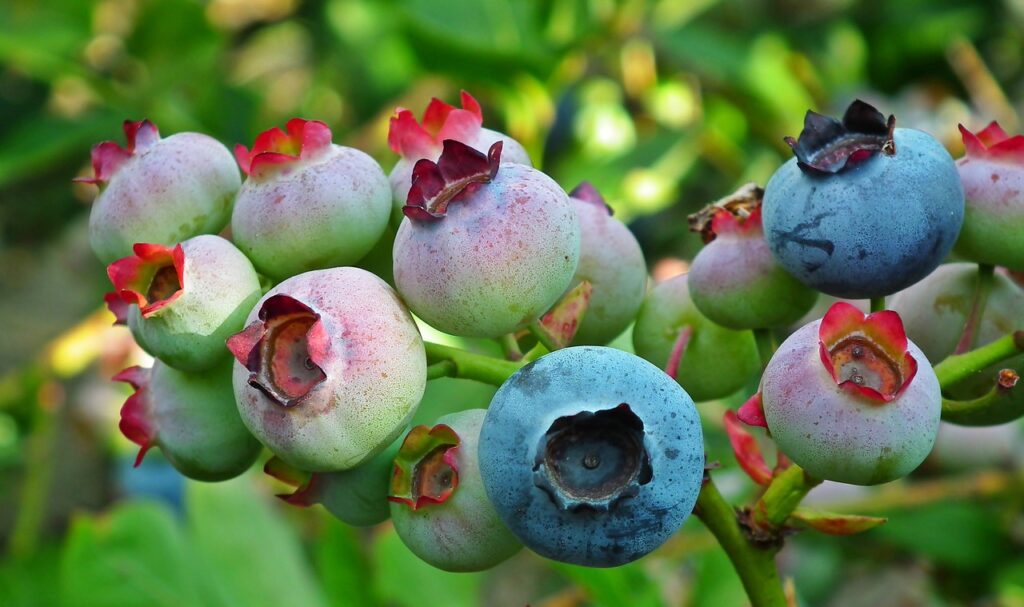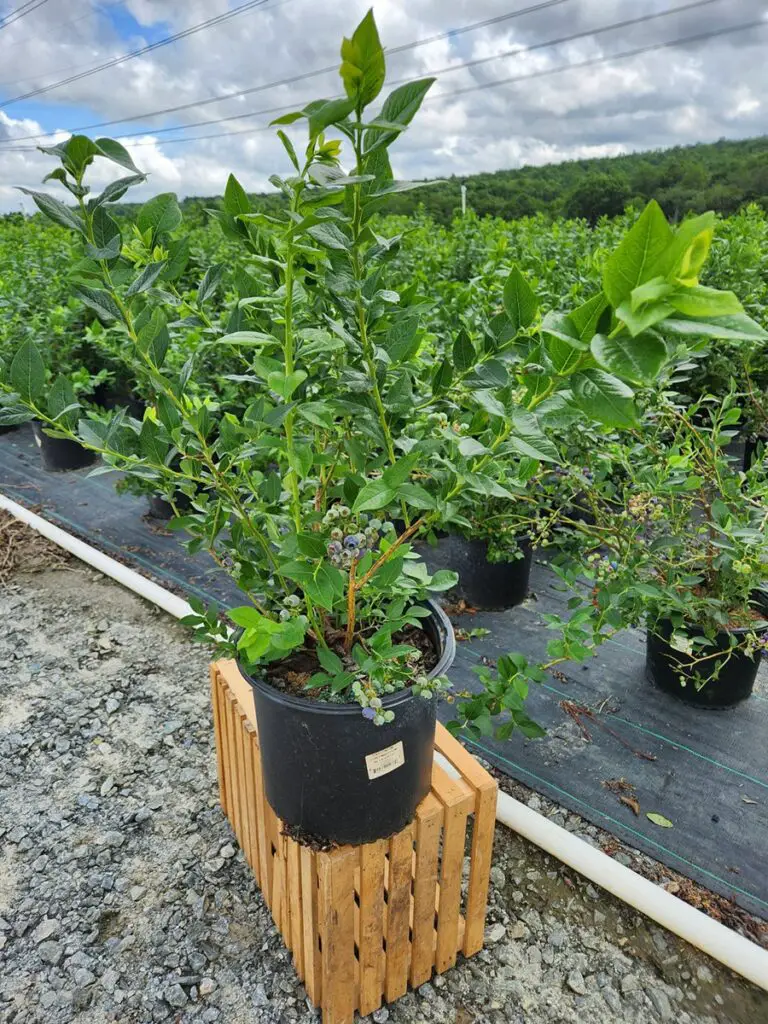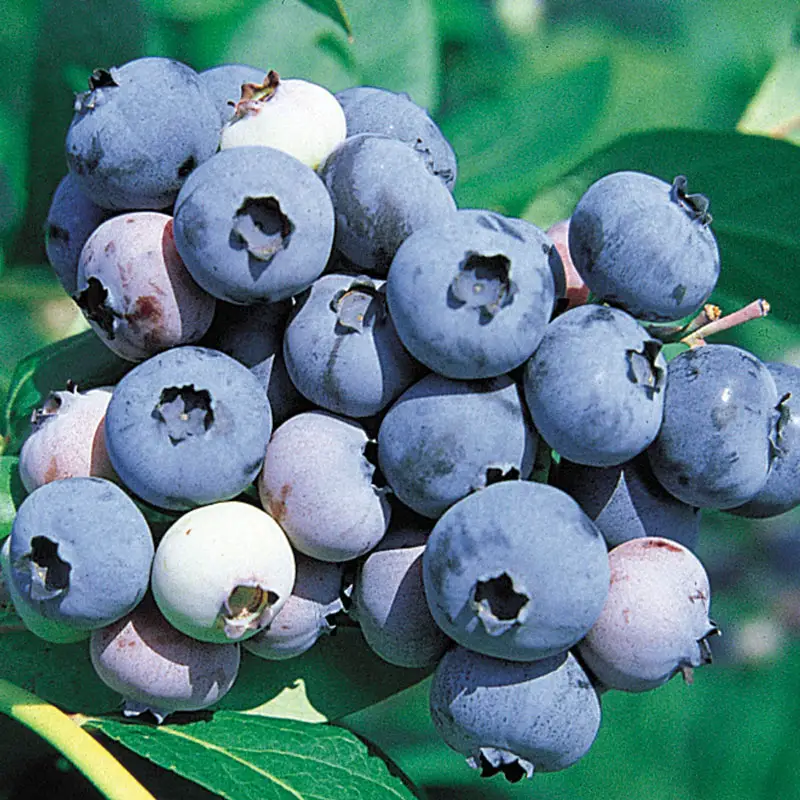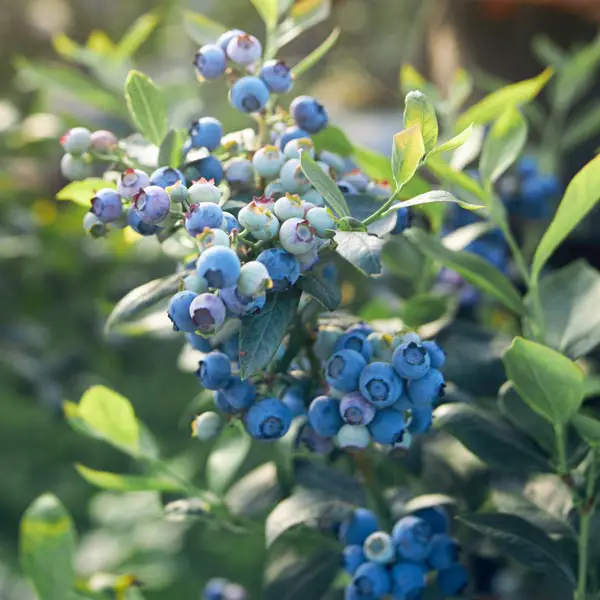
Blueberry bushes are a popular choice for gardeners due to their delicious fruit and beautiful foliage. However, purchasing new plants can be expensive and time-consuming. Propagating blueberry bushes is an easy and cost-effective way to expand your garden. In this article, we will explore how to propagate a blueberry bush, including the best time to do it, the different methods available, and tips for success.
One of the easiest ways to propagate a blueberry bush is through stem cuttings. This method involves taking a cutting from an existing plant and rooting it in a new location. Stem cuttings can be taken in the late spring or early summer when the plant is actively growing. Another popular method is layering, where a stem is bent down and buried in the soil to develop roots. Both methods are effective and can produce healthy new plants in just a few months.
Whether you are an experienced gardener or just starting out, propagating blueberry bushes is a fun and rewarding project. With a little knowledge and patience, you can enjoy a bountiful harvest of fresh blueberries for years to come. In the next sections, we will go into more detail about the different methods of propagation and provide step-by-step instructions for each.
Table of Contents
Understanding Blueberry Bush Propagation
Propagating blueberry bushes is an easy and cost-effective way to grow new plants from existing ones. Blueberry bushes can be propagated through various methods, including softwood cuttings, hardwood cuttings, and layering. Each method has its advantages and disadvantages, and the choice of method may depend on the time of year, the type of blueberry bush, and the grower’s experience.
Softwood cuttings are taken from the tips of new growth shoots in the spring or early summer. The cuttings should be about 4-6 inches long and should have at least two sets of leaves. After removing the lower leaves, the cuttings can be dipped in rooting hormone and planted in a well-draining soil mix. The cuttings should be kept moist and in a warm, humid environment until they develop roots.
Hardwood cuttings are taken from mature wood in the late fall or winter when the plant is dormant. The cuttings should be about 8-12 inches long and should have a diameter of about 1/4 inch. After removing the lower leaves, the cuttings can be dipped in rooting hormone and planted in a well-draining soil mix. The cuttings should be kept moist and in a cool, humid environment until they develop roots.
Layering is a method of propagation that involves bending a low-hanging branch to the ground and covering it with soil. After a few months, the branch will develop roots, and the new plant can be separated from the parent plant. Layering is a slow method of propagation, but it is useful for plants that are difficult to root from cuttings.
In conclusion, understanding blueberry bush propagation is essential for anyone who wants to propagate blueberry bushes. Softwood cuttings, hardwood cuttings, and layering are all viable methods of propagation, and the choice of method may depend on the time of year, the type of blueberry bush, and the grower’s experience. With the right conditions and care, blueberry bushes can be easily propagated to produce healthy and productive plants.
Types of Blueberry Bushes
Blueberry bushes are divided into two main types: highbush and lowbush. Both types have their own unique characteristics and are suited for different growing conditions.
Highbush Blueberry Plants
Highbush blueberry plants are the most common type of blueberry bush and are often grown commercially. They can grow up to 6 feet tall and produce large, juicy berries. Highbush blueberry plants are best suited for areas with mild winters and moderate summers. They require well-draining soil and regular watering.
There are many different varieties of highbush blueberry plants, each with their own unique characteristics. Some popular cultivars include:
Bluecrop: A mid-season variety with large berries and good flavor.

Jersey: A late-season variety with large, firm berries.

Legacy: A late-season variety with large, sweet berries.

Lowbush Blueberry Plants
Lowbush blueberry plants are smaller and more compact than highbush blueberry plants, growing only up to 2 feet tall. They are well-suited for colder climates and can tolerate harsh winters. Lowbush blueberry plants require acidic soil and regular pruning to maintain their shape.
There are several different varieties of lowbush blueberry plants, each with their own unique characteristics. Some popular cultivars include:
- Northland: A mid-season variety with small, sweet berries.
- Patriot: A mid-season variety with large, firm berries.
- Top Hat: A dwarf variety that is perfect for small gardens or containers.
Overall, the type of blueberry bush that is best for you will depend on your growing conditions and personal preferences. Both highbush and lowbush blueberry plants can be rewarding to grow and produce delicious berries.
Propagation Methods
Blueberry bushes can be propagated through several methods, including hardwood cuttings, softwood cuttings, seeds, layering, and growing sucker plants. Each method has its advantages and disadvantages, and the choice of propagation method depends on the grower’s preference and the availability of resources.
Hardwood Cuttings
Hardwood cuttings are taken from mature blueberry bushes during the dormant season. The cuttings should be about 8 to 10 inches long and have at least three nodes. After collecting the cuttings, they should be dipped in rooting hormone and planted in a well-draining soil mix. The cuttings should be kept moist and in a shaded area until they root, which usually takes about 4 to 6 weeks.
Softwood Cuttings
Softwood cuttings are taken from new growth on blueberry bushes during the spring or early summer. The cuttings should be about 4 to 6 inches long and have at least two nodes. After collecting the cuttings, they should be dipped in rooting hormone and planted in a well-draining soil mix. The cuttings should be kept moist and in a shaded area until they root, which usually takes about 2 to 3 weeks.
Seeds
Blueberry seeds can be collected from ripe berries and planted in a well-draining soil mix. The seeds should be covered with a thin layer of soil and kept moist. Germination can take several weeks to several months, depending on the variety of blueberry and the conditions.
Layering
Layering is a method of propagation where a branch of a blueberry bush is bent down and buried in the soil. The buried section should be wounded and treated with rooting hormone to encourage root growth. After the roots have developed, the new plant can be separated from the parent plant and transplanted.
Growing Sucker Plants
Sucker plants are new shoots that grow from the base of a mature blueberry bush. These shoots can be dug up and transplanted to a new location or left to grow as a new plant. Sucker plants can be a good option for propagation if the parent plant is healthy and disease-free.
In conclusion, there are several methods of propagating blueberry bushes, each with its advantages and disadvantages. Growers should choose the method that best suits their needs and resources.
Preparation for Propagation
Before propagating a blueberry bush, it’s important to prepare properly. This involves selecting the right time of year, ensuring the mother plant is healthy, and pruning it appropriately.
The best time to propagate a blueberry bush is during the dormant season, which is typically in the winter. During this time, the plant is not actively growing, making it easier to take cuttings without causing too much stress.
To prepare the mother plant for propagation, it’s important to ensure that it is healthy and free from disease. Inspect the plant for any signs of damage or illness, and remove any unhealthy or dead branches using sharp pruning shears.
When pruning, focus on removing the top shoots and new growth, as these are the areas where the healthiest cuttings will come from. Be sure to leave some terminal leaves on each cutting, as these will help the new plant establish itself.
By taking the time to properly prepare the mother plant, you can increase your chances of successfully propagating a healthy blueberry bush.
Propagation Process
Blueberry bushes can be propagated from cuttings. The process involves taking a cutting from a healthy plant, preparing it, and planting it in a suitable growing medium.
To start, select a healthy blueberry bush and take a cutting from a new growth. The cutting should be about 4-6 inches long and include a few leaves. Remove the leaves from the bottom half of the cutting.
Prepare a propagation mixture by mixing equal parts of peat moss, perlite, and coarse sand. Fill a pot with the mixture and moisten it with water.
Dip the bottom end of the cutting in rooting hormone powder and plant it in the potting soil. Cover the pot with a plastic bag to create a humid environment for the cutting.
Place the pot in a warm, bright spot but out of direct sunlight. Keep the soil moist by watering it regularly. After a few weeks, the cutting should start to root.
Once the cutting has rooted, remove the plastic bag and transplant it into an individual pot filled with a mixture of soil and ground pine bark. Keep the soil moist and the plant in a bright spot with indirect sunlight.
With proper care, the blueberry bush will grow and produce fruit in a few years.
Post Propagation Care
After propagating a blueberry bush successfully, it’s important to provide it with the right care to ensure healthy growth. Here are some tips for post-propagation care:
Light and Temperature
Blueberry bushes need a sunny location to thrive, but they can also tolerate some shade. They prefer a temperature range of 60-70°F (15-21°C) during the day and 40-50°F (4-10°C) at night. If the temperature drops below 32°F (0°C), the plant can be damaged.
Soil and Fertilizer
Blueberry bushes prefer well-drained, acidic soil with a pH range of 4.0-5.5. If the soil is not acidic enough, it can be amended with sulfur or other acidifying agents. Slow-release fertilizer can be added to the soil during the growing season to provide necessary nutrients. It’s important to avoid using too much fertilizer, as this can damage the plant.
Watering
Blueberry bushes need consistent moisture, but they should not be overwatered. The soil should be kept moist but not waterlogged. Watering should be done in the morning or evening to avoid evaporation during the heat of the day.
Pruning
Pruning can help promote healthy growth and fruit production in blueberry bushes. It’s best to prune in late winter or early spring before new growth appears. Dead or diseased branches should be removed, as well as any branches that cross or rub against each other.
By following these post-propagation care tips, blueberry bushes can thrive and produce delicious fruit for years to come.
Transplanting and Growth
Transplanting a blueberry bush is an essential step in the growth process. When the plant is young, it is easier to transplant, and it is recommended to do so in its first year. The ideal time to transplant is in the fall, after the leaves have fallen. This will give the plant enough time to establish its roots before the next growing season.
When transplanting, it is important to choose a location with well-draining soil and full sun exposure. The soil should have a pH level between 4.5 and 5.5. Blueberry bushes prefer acidic soil, so if the soil is not acidic enough, it may be necessary to add sulfur to the soil.
After transplanting, it is important to keep the soil moist but not waterlogged. Overwatering can lead to root rot and other diseases. It is also important to add mulch around the base of the plant to retain moisture and suppress weeds.
As the blueberry bush grows, it will start to produce fruit. The yield of the fruit will depend on the variety of the blueberry bush and the growing conditions. Blueberries are known for their delicious fruit, and a healthy bush can produce up to 10 pounds of fruit per season.
To encourage growth and fruit production, it is important to prune the blueberry bush regularly. Pruning helps to control the height of the bush and promotes new growth. It is recommended to prune in the late winter or early spring before new growth appears.
In conclusion, transplanting and growth are crucial stages in the process of growing blueberries. By choosing the right location, providing proper care, and pruning regularly, a blueberry bush can produce delicious fruit for years to come.
Potential Challenges
Blueberry bushes are generally easy to propagate, but like any plant, they are not without their challenges. Below are some potential issues that may arise during the propagation process.
Disease Management
One of the biggest challenges when propagating blueberry bushes is disease management. Blueberries are susceptible to a number of diseases, including mummy berry, stem canker, and root rot. These diseases can be introduced into your new plants through infected cuttings or soil.
To minimize the risk of disease, it is important to start with healthy parent plants. Look for plants that are free of any signs of disease, such as yellowing leaves or wilting branches. Additionally, be sure to use clean tools when taking cuttings, and sterilize them between each use.
If you do encounter disease in your new plants, it is important to act quickly. Remove any infected plants immediately, and dispose of them away from your other plants. You may also need to treat the surrounding soil with a fungicide to prevent the disease from spreading.
Damage Control
Another potential challenge when propagating blueberry bushes is damage control. Blueberries are a favorite snack of many animals, including birds and deer. If you are propagating your plants outdoors, it is important to protect them from damage.
One effective way to protect your plants is to wrap them in netting. This will prevent birds and other animals from getting to the berries before they are ready to harvest. Additionally, you may want to consider using a deer repellent to keep larger animals at bay.
If you are propagating your plants indoors, you may still encounter issues with damage. Be sure to keep your plants away from pets and small children, and consider using a grow light to ensure they receive enough light to grow strong and healthy.
By being aware of these potential challenges and taking steps to prevent and address them, you can successfully propagate your blueberry bushes and enjoy a bountiful harvest for years to come.
Harvesting
Blueberries are typically ready for harvesting in late spring or early summer, depending on the variety and location. When the fruit is ripe, it will easily separate from the bush with a gentle tug. It is important to harvest blueberries at the right time to ensure the best flavor and texture.
Blueberries are a delicious fruit that can be enjoyed fresh or used in a variety of recipes. They are also known for their high antioxidant content, making them a superfood.
To harvest blueberries, it is best to pick them early in the morning when they are cool. This will help to preserve their flavor and texture. It is also important to handle the fruit gently to avoid bruising.
When harvesting blueberries, it is recommended to use a container that is shallow and wide. This will help to prevent the fruit from being crushed. It is also a good idea to place a layer of soft material, such as a towel or foam, at the bottom of the container to cushion the fruit.
Overall, harvesting blueberries is a simple process that can be done with a little care and attention. By picking the fruit at the right time and handling it gently, you can enjoy the delicious flavor and health benefits of this antioxidant-rich superfood.